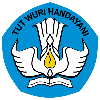Desain Sudut Elevasi Panel Surya Untuk Penerangan Jalan
Kata Kunci:
Panel Surya, Sensor Panel Surya Mini, Sudut Elevasi Panel SuryaAbstrak
Cahaya matahari yang muncul dipagi hari membawa molekul elektron yang akan meradiasikan
sinarnya di sepenjuru permukaan bumi. Memanfaatkan radiasi sinar matahari ini akan kita dapatkan daya
listrik yang dibawa oleh gelombang elektromagnetik, jikalau kita kenakan pada panel surya yang sudah kita
siapkan dengan cara mengarahkannya tegak lurus terhadap gerak putar matahari. Desain sudut elevasi panel
surya dengan menggunakan arduino ATmega2560 sebagai pengontrol system dan sensor panel surya untuk
mengindra arah gerak matahari. Tujuan dari perancangan ini yaitu mencari radiasi yang maksimum
berdasarkan waktu terbit dan terbenamnya matahari serta sudut azimuth dan elevasi sehingga meningkatkan
pengisian baterai. Hasil dari pengujian panel surya dengan membuat aplikasi pemograman komputer dan
merakit alat putar dengan menggunakan motor dan sensor surya yang dilakukan memperoleh daya terbesar
pada pengujian kedua yaitu sebesar 1,01867 Watt, sehingga lama pengisian baterai memerlukan waktu ± 7
jam. Besar radiasi maksimum yang diterima pada panel surya berada di sudut 110 untuk azimuth, sedangkan
untuk elevasi 1 yaitu sbesar1233,0 (MJ/m2/hari). Besar radiasi total yang diterima panel surya selama satu
hari yaitu pada pengujinan ketiga sebesar 10690,2448Wms-2. Artinya dengan mengarahkan panel surya
secara tegak lurus dapat memaksimalkan kerja dari panel surya tersebut.
Unduhan
Referensi
Y. Widiatmoko, “Prototype Pemanfaatan Solar Cell Sebagai Sumber Energi Pada Sistem Otomatisasi Lampu Penerangan Taman.”
W. Roni Syafrialdi, “Rancang Bangun Solar Tracker Berbasis Mikrokontroler Atmega8535 Dengan Sensor Ldr Dan Penampil Lcd,” vol. 4, no.2, pp. 113–122, 2015.
D. Suryana, “Otomatisasi pada Panel Surya menggunakan Sistem Tracking Aktif Tipe Single - Axis Automation Single Axis Type of Active System Tracking on,” vol. 2, no. 1, 2016. 4. B. Sitorus, I. H. Tumaliang, and L. S. P. St, “Perancangan Panel Surya Pelacak Arah Matahari Berbasis Arduino Uno,” vol. 5, no. 3, pp. 1–12, 2015.
F. Riskiya, “Sensor Cahaya,” 2015.
K. Pangestuningtyas, D L, Hermawan, “Analisis Pengaruh Sudut Kemiringan Panel Surya Terhadap Radiasi Matahari Yang Diterima Oleh Panel Surya Tipe Larik Tetap,” vol. 2 NO. 4, pp. 0–7, 2013.
H. Asy’ari, Jatmiko, and Angga, “Intensitas Cahaya Matahari Terhadap Daya Keluaran Panel Surya,” pp. 52–57, 2013.
B. Yuwono, “Optimalisasi Panel Sel Surya Dengan Menggunakan Sistem Pelacak Berbasis Mikrokontroler AT89C51,”.
A. E. Dewi, “Optimalisasi Rangkaian Panel Sel Surya Dengan Menggunakan Battery pb-acid Sebagai Sistem Penyimpanan Energi Surya.”
K. Fadhulullah, “Rancang Bangun Solar Tracking Sistem Berbasis Arduino,” 2017.
L. N. Zulita, “Perancangan Murtal Otomatis Menggunakan Mikrokontoller Arduino Mega 2560,” vol. 12, no. 1, pp. 89–98, 2016.
M. Saleh, “Rancang Bangun Sistem Keamanan Rumah Menggunakan Relay,” vol. 8, no. 3, pp. 181–186, 2017.
S. Nasution, J. T. Elektro, and P. N. Jakarta, “Analisis Sistem Kerja Inverter untuk Mengubah Kecepatan Motor Induksi Tiga Phasa sebagai Driver Robot,” vol. 3, no. 2, pp. 139–143, 2012.
A. Priyono, “Rancang Bangun Penggerak Panel surya Mengikuti Matahari Secara Vertikal Di,” vol. 78124, no. 0561.
H. E. Hardianto and R. S. Rinaldi, “Perancangan Prototype Penjejak Cahaya Matahari Pada AplikasiPembangkit Listrik,” vol. 2, no.
September, pp. 208– 215, 2012. 16. M. T. Kantori, Z. Sugianto, M. I. Nugraha, and A. Febriansyah, “Mobile Robot Pemain Bola : Aplikasi Pada KRSBI 2017,” 2017.
T. M. A. Pandria, P. Studi, T. Industri, F. Teknik, and U. T. Umar, “Penentuan Kemiringan Sudut Optimal,” vol. 3, pp. 123–131, 2017.
K. J. Pangestuningtyas Diah L, Hermawan, “Analisis Pengaruh Sudut Kemiringan Panel Surya Tipe Array Tetap terhadap Energi yang Dihasilkan pada Solar Home System ( SHS ).”
S. Pandey, “Solar Panel Tracking Control,” no. July, 2016.
S. V. Larios, Leonardo , Bryce Smith, “Sun Tracking Solar Panel,” no. 35, 2017.
E. Liedholm, “Tracking the maximum power point of solar panels,”.
Unduhan
Diterbitkan
Cara Mengutip
Terbitan
Bagian
Lisensi
Hak Cipta (c) 2022 Prosiding Seminar Nasional Teknoka

Artikel ini berlisensiCreative Commons Attribution-NonCommercial-ShareAlike 4.0 International License.






 Supported by :
Supported by :


